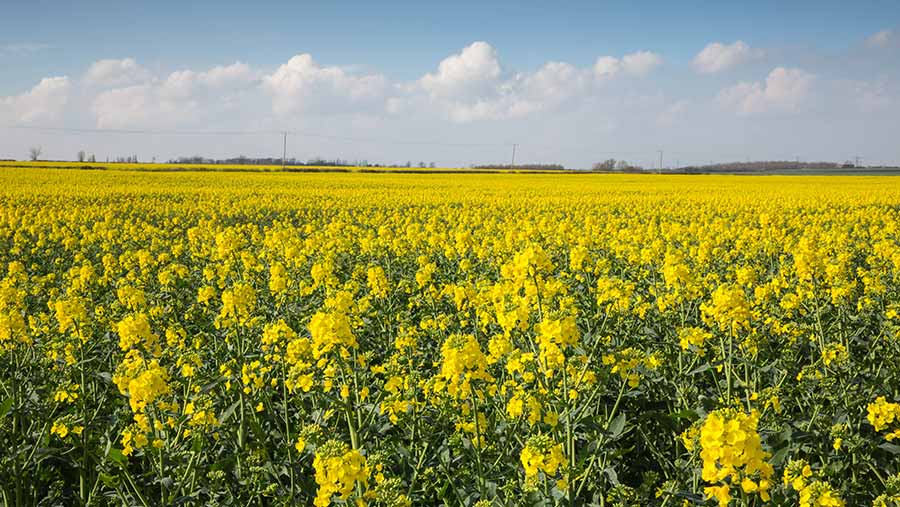Dwindling stocks and harvest concerns support OSR prices
 © Tim Scrivener
© Tim Scrivener Oilseed rape prices remain firm as old-season crop stocks dwindle and harvest predictions point to reduced domestic and global yields for 2021.
Prices for old-season crop are above £500/t ex-farm – more than £150/t higher than the same stage 12 months ago.
According to John Thorpe, Openfield Agriculture’s oilseed rape trader, it is difficult to find old crop to trade, with five weeks still to go until the harvest is likely to begin.
See also: Why one Norfolk grower has kept oilseed rape in his rotation
The lack of supply has seen a differential between old crop and August new crop futures of about £50/t this week as traders compete for stock.
Even when the new crop does come in, the total harvest from a reduced area of about 330,000ha could be just 950,000t in total, Mr Thorpe said.
This is well short of the UK’s crushing capacity of 2m tonnes based on an optimum growing area of 600,000ha.
The smaller area is due to flea beetle, either directly through failed crops, or acting as a deterrent to drilling the crop on infested land.
Worrying weather
Reuters also reported that the EU’s biggest rape grower, France, has been hit with a projected 2.95m tonne crop for 2021 – 9.2% down on year-earlier levels.
The news pushed up Paris November-21 rapeseed futures by €4.50/t (£3.85/t) to €535.50/t (£460.73/t) at Monday’s close.
United Oilseeds trading manager Owen Cligg said low global and domestic supply levels set against food and biofuel demand meant the market would remain firm.
Crops that have survived in the UK are looking very good since a decent spell of warm sun followed a wet May.
The crop is coming out of flower in the southern half of the UK and looks uniform, if a little short, Mr Cligg said.
He suggested growers could make good money with new crop futures for August at about £450/t ex-farm.
Price movement
However, varying weather reports released around the world have caused a lot of movement in the price, Mr Cligg said.
He pointed to a US Department of Agriculture report released this week. It suggested that a heatwave across Canada’s canola-growing prairies had raised concerns over a much-reduced harvest.
Meanwhile, the alternative oil-producing crop, soya bean, has been hit by a return to dry weather in US growing areas.
The crop has been downgraded from 72% in the good-quality range to just 67%, which is below the forecast 70% level expected by the market.
